To see what happens when food coloring molecules diffuse (move) through Jell-O, you’ll need:
- Plain, unflavored gelatin from the grocery store or Target
- Food coloring
- Two casserole dishes (around 8x12 inches) or a rimmed cookie sheet that will hold liquid
- A drinking straw
- Toothpicks
- A ruler
*For a single pan, cut the recipe in half.
Follow these steps to do the project:
1. Add 6 packs of plain, unflavored gelatin (1 oz or 28 gm) to 4 cups of boiling water. (Parental supervision required.) Stir well until all the gelatin has dissolved and remove bubbles with a spoon.
2. Allow the melted gelatin to cool to a kid-safe temperature. Pour the liquid gelatin into two large pans or a rimmed cookie sheet so that it is around 1-1.5 centimeters deep. It doesn't have to be exact.
3. Allow the gelatin to harden.
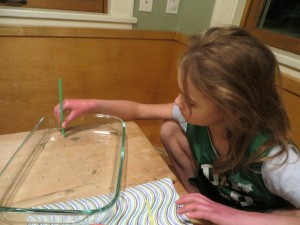
4. Use a straw to create holes in the gelatin, a few centimeters apart, scattered across the surface. It works best to poke a straw straight into the gelatin, but not all the way to the bottom. Spin the straw and remove it. Then, use a toothpick or skewer to pull out the gelatin plug you've created. This will leave a perfect hole for food coloring. Very young children may need help with this step.
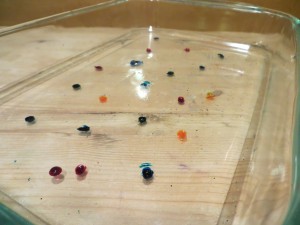
5. Have your child put a drop of food coloring in each hole in the gelatin.
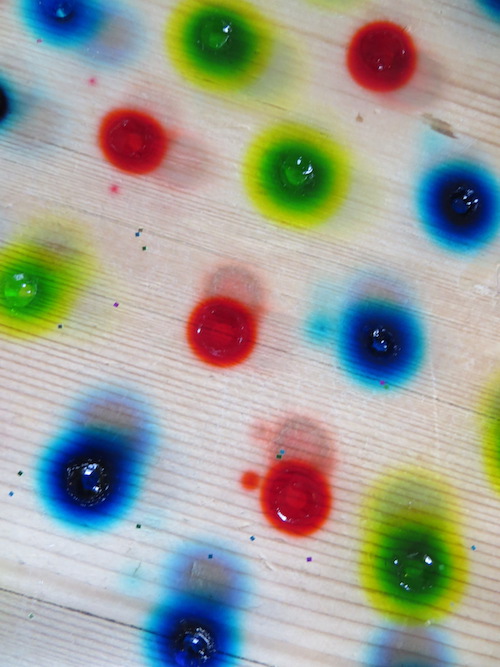
6. Let the gelatin pans sit for around 24 hours. If you used two pans, put one in the refrigerator and leave the other one at room temperature. Every so often, let your child use a ruler to measure the circle of food coloring molecules as they diffuse (move) into the gelatin around them. Do the circles grow faster in the cold, or at room temperature? Ask your child whether some colors diffuse faster than others.
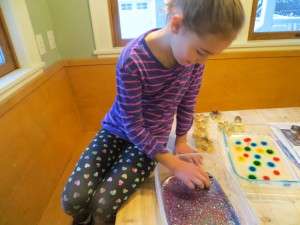
7. After 24 hours or so, blot off excess the food coloring with a paper towel and let your child use cookie cutters to cut shapes from the gelatin. Carefully, remove the shapes from the pan with a spatula or your fingers, and stick them to a window. If they break, you can reassemble them on the window.
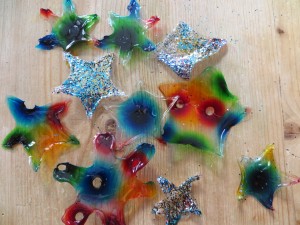
8. Observe the window stickies each day to see what happens when the water evaporates. When they’re dry, peel them off the window.
The Science Behind the Fun
When molecules, like the ones in food coloring, move from areas of high concentration, where there are lots of other similar molecules, to areas of low concentration, where there are fewer similar molecules, scientists call the process diffusion. When the molecules are evenly spread throughout a space, they've reached a balance called equilibrium.
Many things affect how fast molecules diffuse, including temperature. When molecules are heated up, they vibrate faster and move around faster, which helps them find this balance more quickly than they would if it were cold. Diffusion takes place in gases like air, liquids like water, and even in solids.
See the Experiment in Action
Watch a video of this experimient here.
You can find more experiments like this one at kitchenpantryscientist.com, and in my books Kitchen Science Lab for Kids (Quarry Books), and Outdoor Science Lab for Kids (Quarry Books).
© Quarry Books, 2016
Featured Photos Credit: © Amber Procaccini

